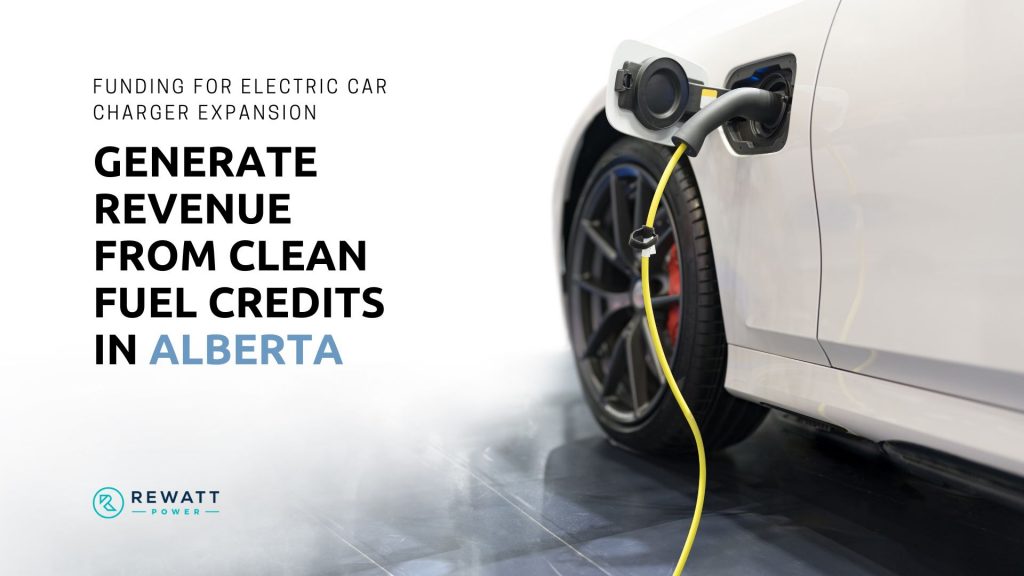Implementing EnergSync on AWS

Intro Many EV Charging organizations are currently using AWS for their data management solution, and thus this is where site and charging data is stored. In this guide, we’ll show how you can easily share this data securely with Rewatt via API. Specifically we’ll cover how to do a basic implementation of the Rewatt EV […]
EV Charging Data: API or CSV?

As we consider how to submit reports for the CFR and BC LCFS regulations, and what data needs to be collected, we also need to think about how we collect this data. Generally what we are talking about here are charging sessions. How much energy was delivered to the vehicle, when was it delivered and […]
Examples of supplying 100,000 kWh to electric vehicles

This post is part of the EV Charging Incentive series of articles. You can go to the main article to view earnings of supplying 100,000kWh in different Canadian provinces. Clean Fuel credits are incentives for EV charger installations in Canada. By installing and operating electric vehicle (EV) chargers in Canada, you earn revenue by generating and […]
EV charger installation incentives: Earnings by Canadian province

This post is the main article for the Incentives for EV Charger Installation series of articles. Below, you can view different earnings across different Canadian provinces. Clean Fuel credits are incentives for EV charger installations in Canada. By installing and operating electric vehicle (EV) chargers in Canada, you earn revenue by generating and selling Clean Fuel […]
Alberta: Revenue from clean fuel credits with EV chargers

This post is the main article for the Incentives for EV Charger Installation series of articles. You can go to the main article to view earnings in different Canadian provinces. Use Case: Alberta For 100,000 kWh of energy supplied per year It is difficult to quantify what 100,000 kWh is equivalent to. As a result, […]
EV Charging: Network Operator or Site Host

Get Incentives for EV Charging from Carbon Credits: Network Operator or Site Host Determine if you want to be a Network Operator or a Site Host for EV charging in Canada By Ernest Yap The Canadian federal government is introducing new incentives for EV charging installations to encourage people and businesses to switch to electric […]
BC: Revenue from clean fuel credits with EV chargers

This post is the main article for the Incentives for EV Charger Installation series of articles. You can go to the main article to view earnings in different Canadian provinces. Use-Case: BC For 100,000 kWh of energy supplied per year for five years It is difficult to quantify what 100,000 kWh is equivalent to. As […]
Ontario: Revenue from clean fuel credits with EV chargers

This post is the main article for the Incentives for EV Charger Installation series of articles. You can go to the main article to view earnings in different Canadian provinces. Use-Case: Ontario For 100,000 kWh of energy supplied per year in Ontario over five years What is 100,000kWh per year equivalent to? Here are some […]
Credits to ignite explosion of public EV chargers across Canada

On July 1, 2023, the financing of public electric car (EV) chargers will change across Canada. The federal government of Canada has created a regulated carbon market based on the Canadian Clean Fuel Regulations (CFR). If you’re a network operator or site host of public electric-vehicle charger, you can generate Canadian CFR credits for electric […]
4 Steps to Calculate Your Income from Alberta Solar or Wind Carbon Credits

4 Steps to Calculate your Income from Solar or Wind Carbon Credits in Alberta Written by Ernest Yap Note: This article applies to Alberta homeowners, commercial property owners, and municipalities with solar or wind systems of less than 5,000 kilowatt of capacity (“microgenerators”). If you have a utility-scale project, then your costs and calculations are […]

